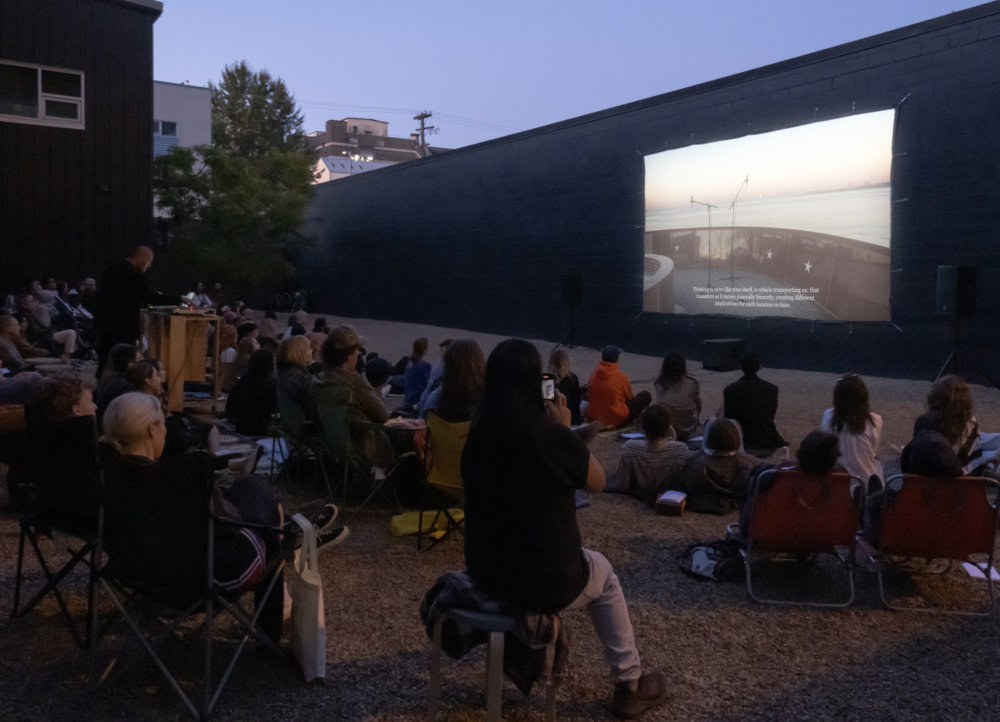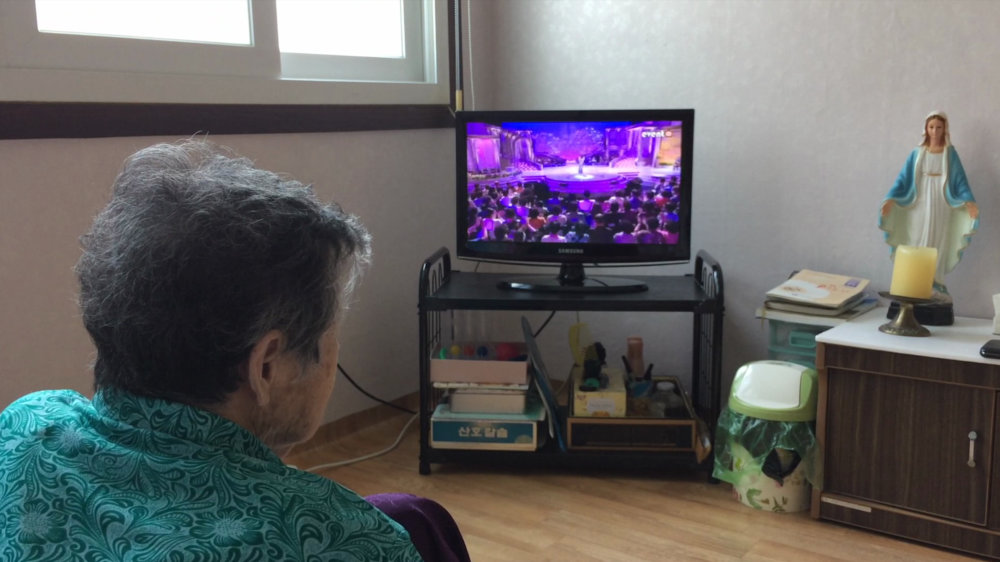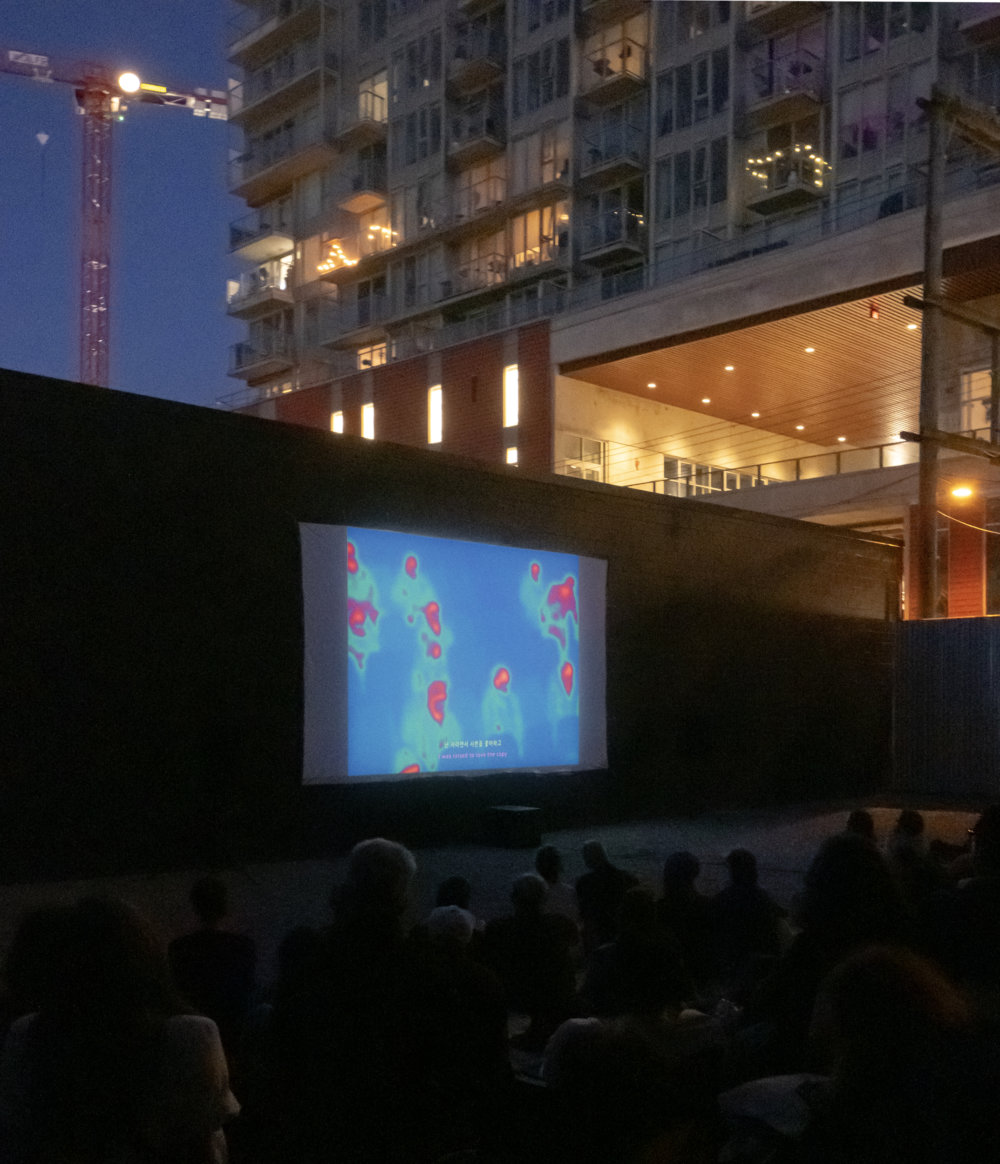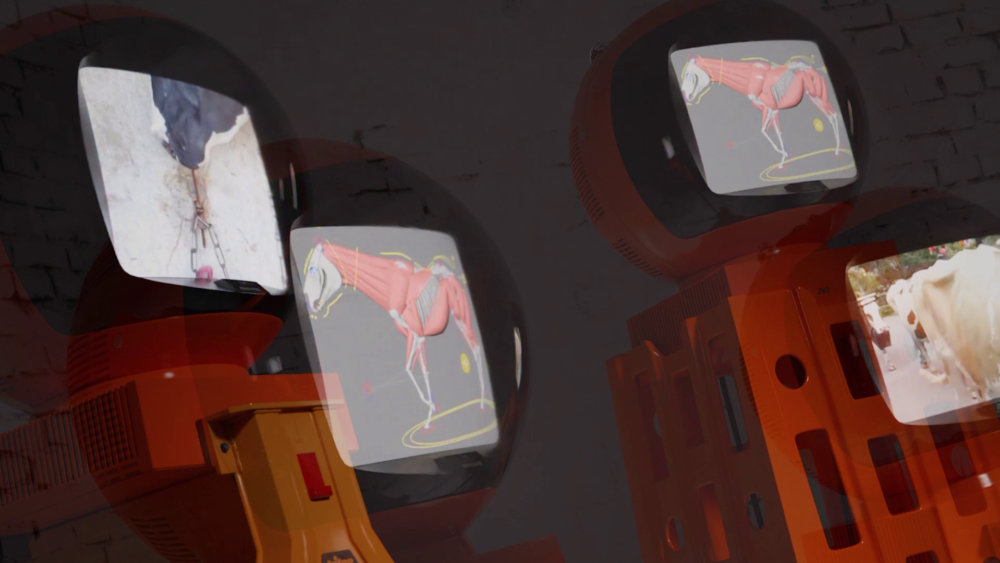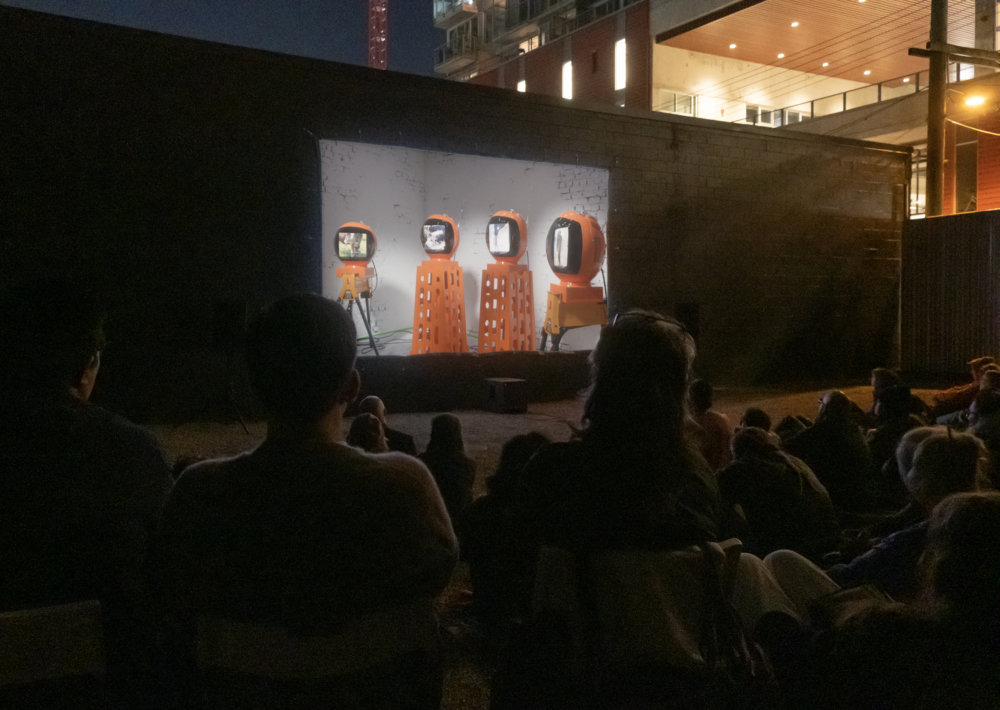Judy Radul, Andrew Yong Hoon Lee, Steven Cottingham
Where the echoes cannot end
September 15, 2023
Noise is typically understood as the limits of perception—that which has not or cannot be parsed and made sensible. Zoom in far enough to an image and you will be lost in its pixels or film grain, while enough distance from a sound source yields washed-out reverberations and drone. Recently, the phenomenon of AI image spawning shows us how a neural network will begin with a noise field, and then attempt to make sense of it, slowly refining static into blobs, silhouettes, and then figures—a kind of digital pareidolia. Noise may also be purposefully introduced to an image, sacrificing perfect clarity to achieve other ends. For instance, digital compression reduces colour and complexity so that a video may be streamed and shared. Noise allows the file to become non-static.
Andrew Yong Hoon Lee makes use of collaged footage to show how circulation is always dependent on an ecology of relations: some of the simplest being the musical relationship between activator and resonator, plectrum and string, hammer and drum. Rendered footage of two black holes colliding and the oral transmission of a 3000-year-old Korean shaman song reveal extremes of these relationships. Elsewhere, frenetic camerawork captures an elementary school choir performing a melancholic pop song cover: a cultural echo that seems to gain momentum as it disperses. Highlighting noise in both image and sound, the artist uses circulatory media to point to the permeability of ego boundaries.
In Judy Radul’s Warmer Than The World Around Us, thermal cameras capture heat, making use of a technology typically used to record entropic loss in order to show the energy generated by Korean musicians Gina Hwang and Hannah Kim as they perform their instruments. When Hwang strikes her geomungo, bright streaks appear across its strings. Sound bounces around the theatre while the marks of an otherwise-invisible friction glow. “Distribute Free Energy to the Universe,” proclaims the film’s silent narrator in subtitles.
Steven Cottingham’s videos feature industrial equipment bearing animal symbolism reanimated as music-making kinetic sculptures. A Ram truck door becomes a harp body, a cattle prod snaps and buzzes like a snare drum, while a bass drum pedal kicks at a lion statue. One piece features video footage of a tanning factory, chopped and edited into percussive samples. The resulting piece is full of electronic rhythms made from the footage of domesticated animals who would otherwise supply raw materials for physical drums.
As the sounds reverberate, they begin to echo, each repetition picking up the unique sonic properties of the environment in which they are dispersed. These artists present songs composed from the noise of daily life, where the disparity of visual and audio elements allows the omnipresent drone to be seen with something like clarity, and the familiar to speak with a new voice.






